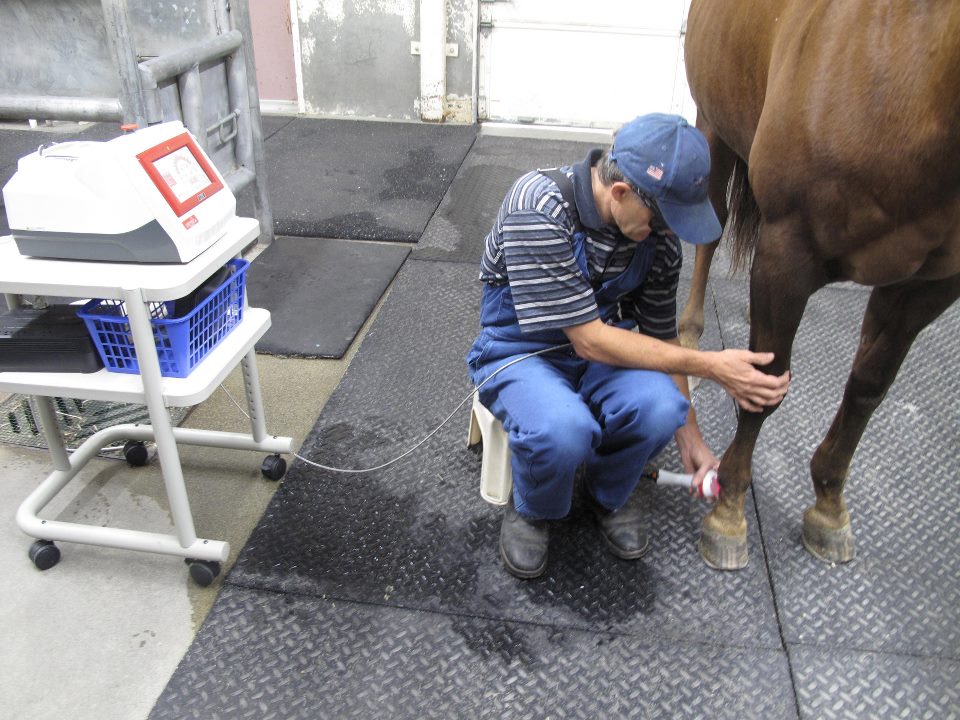Equine Therapy Programs: Changing Lives One Adventure at once
Equine Therapy Programs: Changing Lives One Adventure at once
Blog Article
Reviewing the Efficiency of Laser Therapy in Horse Therapy for Injury Rehabilitation
The evaluation of laser treatment's efficiency in equine injury rehabilitation pivots on multiple variables, including recuperation time, pain reduction, and tissue regrowth. Clinical research studies suggest significant enhancements in problems like tendonitis and osteoarthritis, associated to improved cellular function and raised ATP production. Vets often observe superior results with laser treatment compared to standard methods, placing it as a vital element in equine care. Nonetheless, the necessity for constant surveillance and customized therapy strategies can not be overstated. What details clinical proof supports these insurance claims, and just how do veterinarians execute these procedures in technique?

Comprehending Laser Therapy
Laser therapy has become a pivotal device in vet medication, especially in the therapy of equine conditions. Known for its non-invasive nature and efficacy, laser treatment entails the application of details wavelengths of light to boost cells repair work and minimize swelling. This restorative modality is increasingly preferred for its capacity to speed up the healing process in horses experiencing a selection of bone and joint injuries and chronic problems.
The key system behind laser therapy is its capacity to enhance cellular features. Furthermore, laser therapy advertises vasodilation, improving blood circulation and oxygen delivery to broken tissues, therefore expediting recuperation.
In equine medicine, laser treatment is specifically valuable for conditions such as tendonitis, osteo arthritis, and wound recovery. The strategy is lauded for its pain-relieving homes, allowing equines to reclaim movement and feature much more quickly. Vets also appreciate its marginal adverse effects contrasted to various other treatment techniques, making it a dependable and risk-free alternative for equine care.
Exactly How Laser Treatment Functions
To understand exactly how laser treatment functions, it is important to explore the interaction in between light power and organic tissues. Laser treatment, also referred to as Low-Level Laser Therapy (LLLT) or photobiomodulation, utilizes specific wavelengths of light to permeate cells and boost mobile procedures. The mechanism depends upon the absorption of photons by cell chromophores, mainly within the mitochondria, which are critical for energy production.
Upon absorption, these photons activate a collection of biochemical adjustments, enhancing mitochondrial function and bring about increased adenosine triphosphate (ATP) production. This rise in ATP accelerates cellular metabolism, promoting tissue repair service and regeneration. Furthermore, laser therapy modulates inflammatory reactions by impacting cytokine levels and minimizing oxidative anxiety, consequently alleviating pain and swelling.
An additional considerable facet of laser treatment is its role in boosting microcirculation. The treatment promotes vasodilation, boosting blood circulation and oxygen delivery to broken tissues. This facilitates the elimination of cellular particles and supports the spreading of fibroblasts and collagen synthesis, vital for wound recovery.
Scientific Evidence
The efficiency of laser therapy in equine therapy has been validated via different clinical studies, showcasing its healing prospective throughout a variety of problems. A number of regulated trials and empirical studies have actually documented considerable improvements in cells repair service, pain decrease, and overall rehab timelines. A study performed by Turner et al. (2012) showed that horses treated with low-level laser therapy (LLLT) for ligament injuries showed sped up healing compared to those receiving traditional therapies. The research highlighted a marked reduction in swelling and boosted collagen formation.
Likewise, research by Johnson and colleagues (2015) concentrated on equine muscle mass injuries, exposing that laser therapy dramatically quickened muscle fiber regrowth and decreased muscle rigidity. Scientific assessments have actually shown that laser treatment can ease chronic problems such as osteoarthritis.
Veterinarian Insights
Vet professionals have significantly recognized the value of laser treatment in equine treatment, mentioning both empirical evidence and direct experience. Dr. Jane Smith, a leading equine veterinarian, keeps in mind that laser therapy has shown impressive efficacy in minimizing swelling and increasing tissue repair work.
Veterinarians likewise value the versatility of laser therapy. It can be utilized for a vast array of conditions, from shallow wounds to much deeper bone and joint injuries. Dr. Emily Brown highlights its energy in dealing with problems like tendonitis and osteoarthritis, where conventional therapies usually fail. She points out that laser therapy can be tailored to the particular requirements of each equine, making sure optimum end results.

Practical Considerations
An essential element of implementing laser treatment helpful hints in equine therapy includes recognizing the sensible factors to consider that guarantee its effectiveness and safety and security. First and primary, it is important to choose the suitable laser tool, as different types vary in wavelength, power, and penetration deepness. Vets have to be skilled in these criteria to tailor therapy protocols properly to every injury kind
Furthermore, the regularity and duration of laser treatment sessions need cautious preparation to make the most of healing benefits while decreasing any type of possible adverse impacts. Regular tracking of the steed's response to treatment can lead necessary modifications in the treatment regimen. Establishing a risk-free and regulated environment during therapies is additionally important to stop accidental exposure to laser discharges, which can harm both the horse and the handler.
Educating and qualification of personnel carrying out laser treatment are paramount to make sure appropriate strategy and to copyright safety requirements. Furthermore, preserving exact documents of each session, consisting of laser setups and observed end results, is vital for assessing the general performance of the therapy and for making data-driven choices.
Verdict
Laser treatment has actually become an effective modality in equine injury rehabilitation, offering substantial benefits in recovery time, pain alleviation, and cells recovery. Scientific researches underscore significant improvements in conditions such as tendonitis and osteo arthritis, connected to boosted mobile feature and enhanced ATP production. Veterinarian monitorings corroborate these searchings for, highlighting premium end results contrasted to standard therapies. For optimum click reference results, constant tracking and personalized treatment methods continue to be necessary in leveraging the full capacity of laser therapy in equine treatment.
Report this page